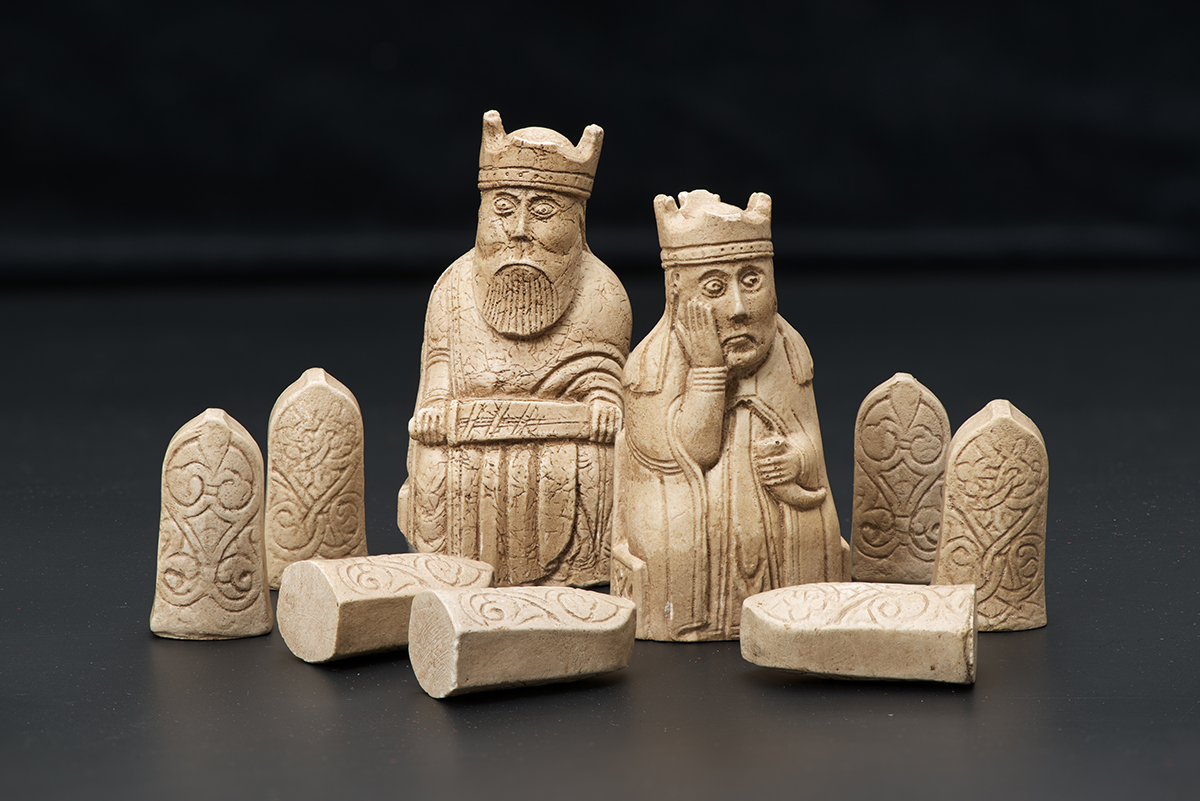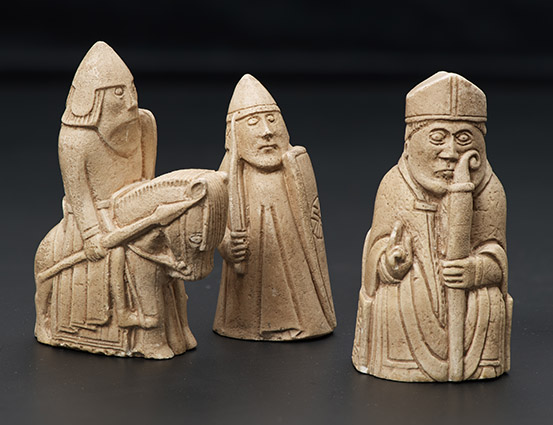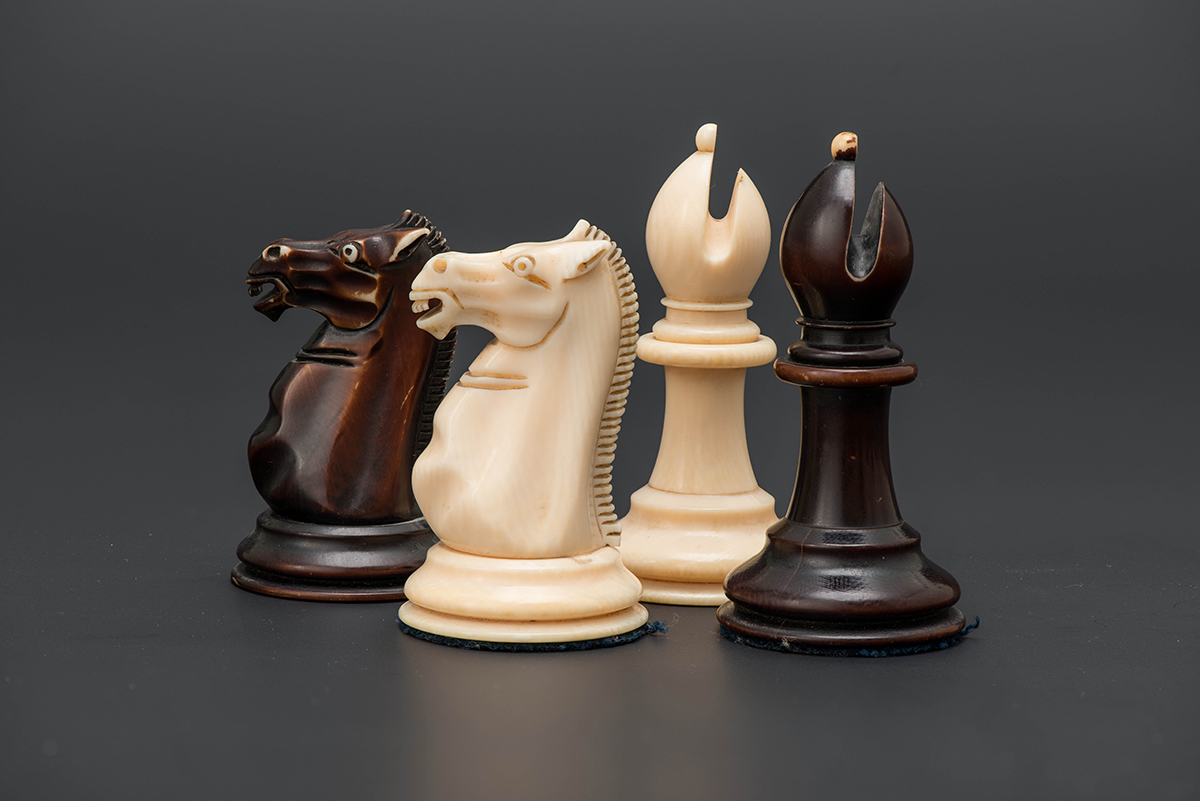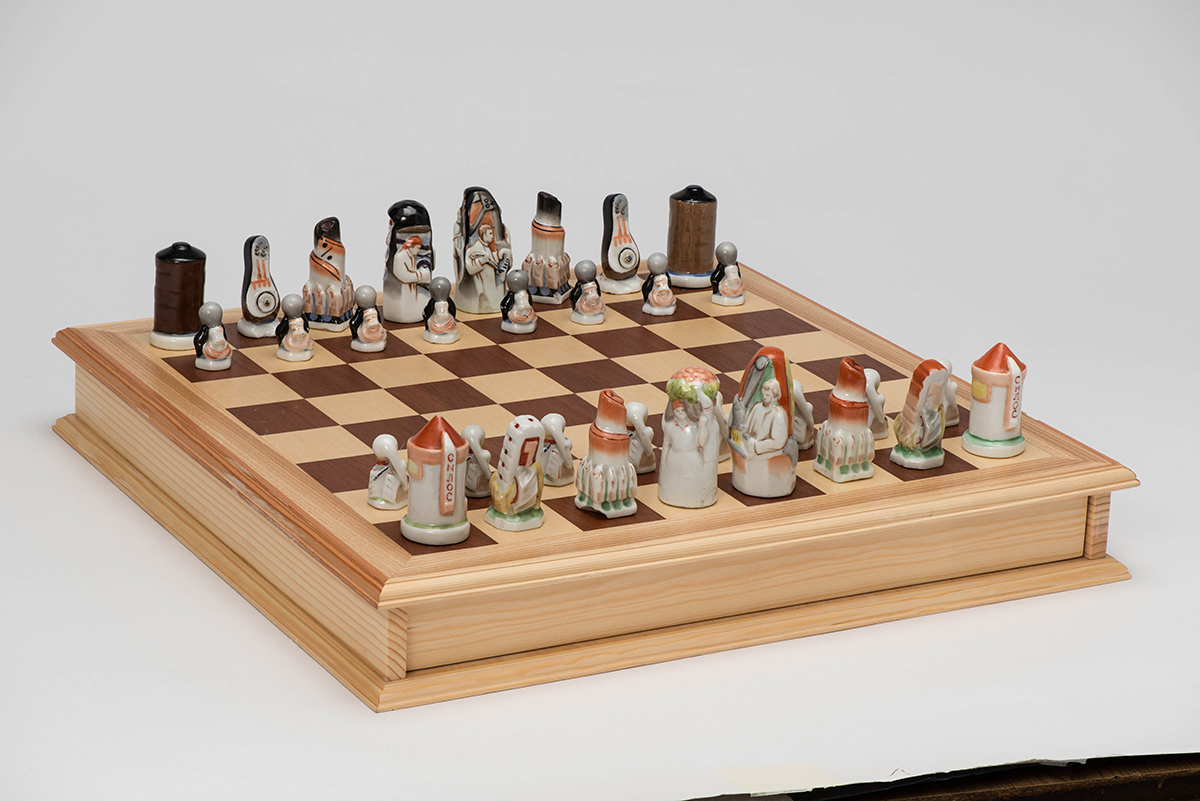Viking chess set

Period
12th centuryPlace
Lewis Island, United Kingdom
Material
Walrus tusk
Location
the British Museum, London, UK
Category
The GameSubcategory
Chess setsThematic collections
Chess before the 20th century
Curious fact
The “Lewis chessmen” remain a symbol of medieval chess and are often featured in film adaptations of the period.
Perhaps the most famous European chess pieces from the Middle Ages were found by pure chance under still unexplained circumstances. It is only known that they were discovered off the coast of the Isle of Lewis, west of Scotland, in 1831. Having changed hands multiple times, most of these pieces are now in the British Museum. Nearly three complete chess sets (along with individual pieces) have survived to this day, giving us insight into the 12th-century chess culture, when mastering the game was essential for every knight, and showcasing the advanced techniques used in chess-making. These are not abstract chessmen; the entire set, from the king to the rook, is meticulously crafted, except for the pawns, which traditionally lack anthropomorphic traits.Art historians believe that the walrus tusk chess set arrived in Scotland from Norway, which explains its alternative name, the “Viking chess set.” However, skeptics raise many questions, such as why the set includes the bishop, a piece not known in chess until the 14th century. Regardless, the “Lewis chessmen” remain a symbol of medieval chess and are often featured in film adaptations of the period.




